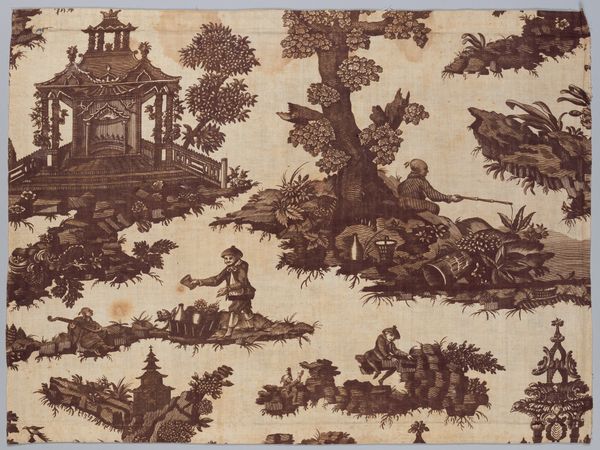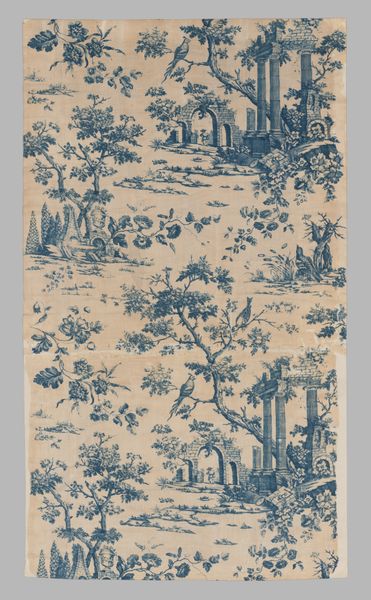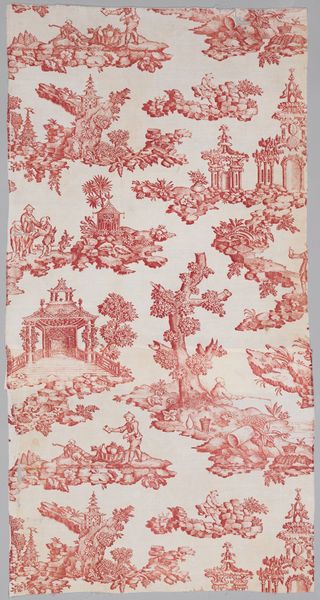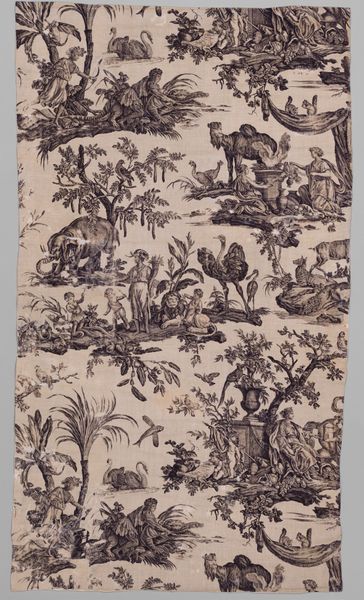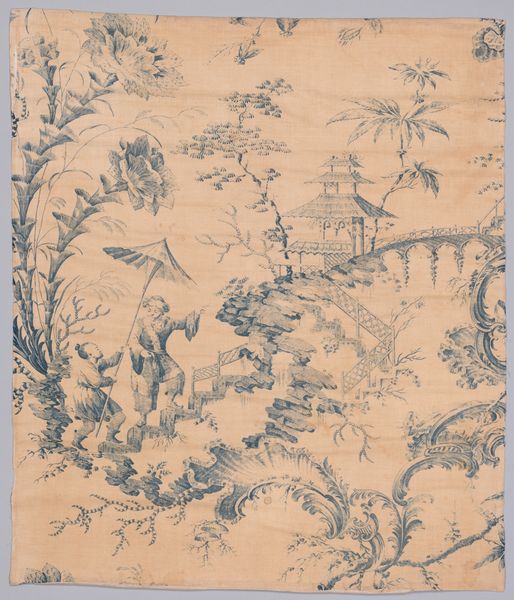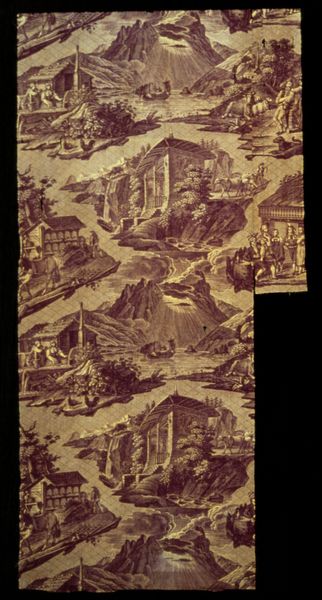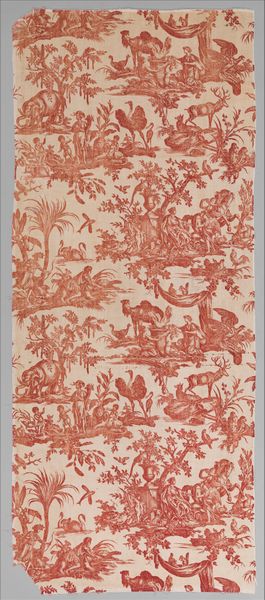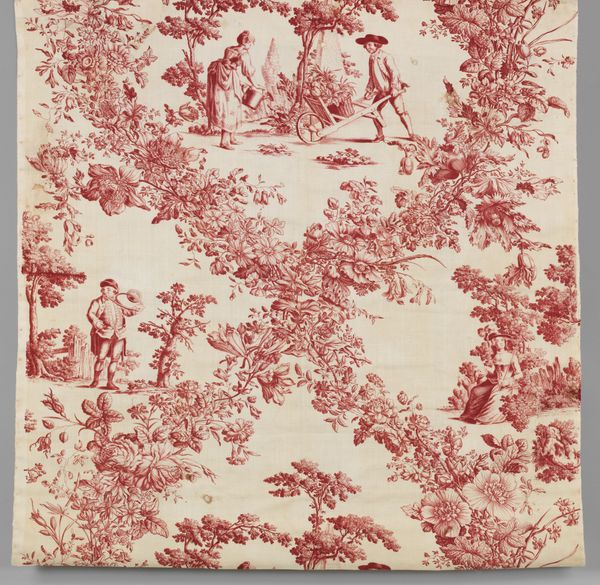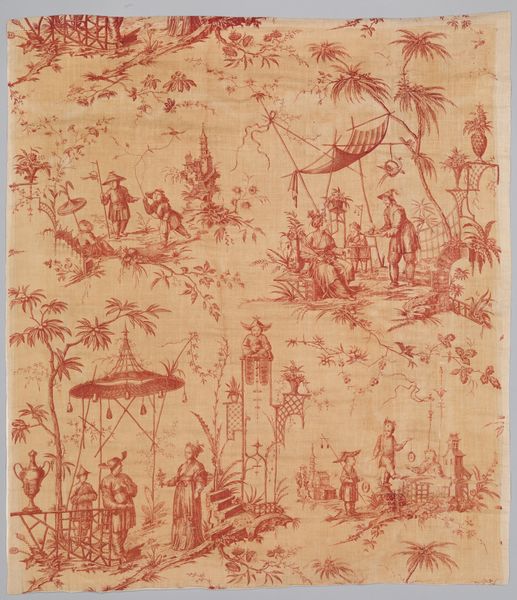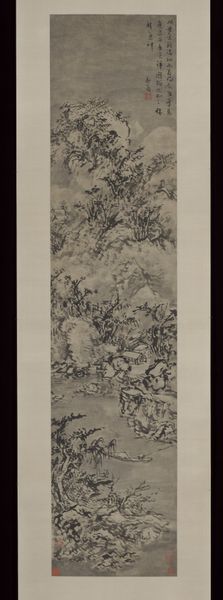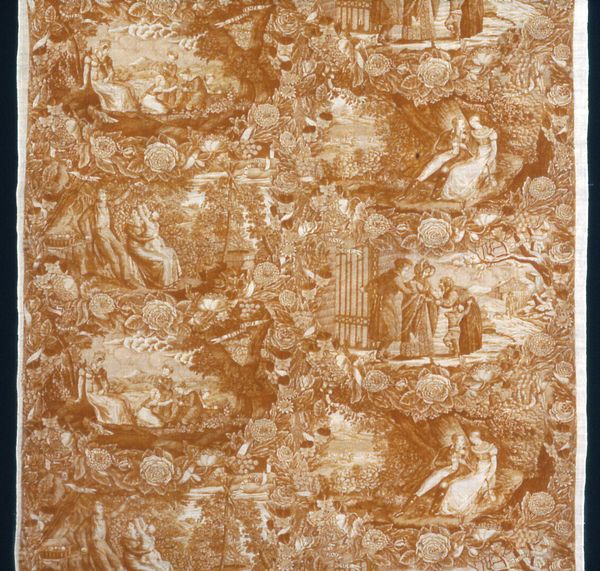
Dimensions: L. 110 1/2 x W. 82 inches 280.7 x 208.3 cm
Copyright: Public Domain
Curator: Upon first viewing, I’m struck by its immediate evocation of pastoral life and courtly leisure. A world teeming with peacocks and ancient ruins unfolds before us. Editor: Indeed. And we're looking at a remarkable example of textile art titled "Printed cotton," dating back to 1761. You can currently find it here at the Metropolitan Museum of Art. The artist is unknown but no less captivating in the worlds rendered in sepia tones. Curator: The visual rhythm, its repetition… almost hypnotic. Those ruined columns recur, hinting at empires faded and the enduring appeal of classical aesthetics. What kind of symbolism resonates for you? Editor: It’s precisely those columns and verdant depictions, so carefully arranged. Columns act as more than architectural elements, serving as gateways to other domains. Also peacocks were thought to ward off malevolent forces in medieval times! But in that same frame we also see hunting scenes... Quite interesting juxtapositions of domestic idylls versus animal subjugation... Curator: The interplay between the exotic peacocks and those humble, hunted animals provides such rich avenues for social critique. This isn't merely decoration, it's an articulation of power relations, of privilege enshrined in design. What was life like for workers? Were fabrics such as these readily accessible to those in lower strata of the British class system? Or was this another indulgence for only upper tiers? Editor: You bring up crucial considerations. Textile production then relied on exploitation, fueled by colonial trade networks and unfair labor conditions. Those intricate scenes become tainted with darker implications upon even further contemplation, especially the origin and sale of materials from the East. The printing on cotton introduces another layer of dialogue in the history of industrial innovation that would irrevocably shift British society at the time. Curator: Yes, precisely. A gorgeous artifact, undoubtedly, but also a stark reminder of how aesthetic beauty can obscure social and ecological injustices. Thank you for offering more insight in this context. Editor: A vital conversation that reminds us the importance of material histories and embedded symbolism. Always look twice!
Comments
No comments
Be the first to comment and join the conversation on the ultimate creative platform.

